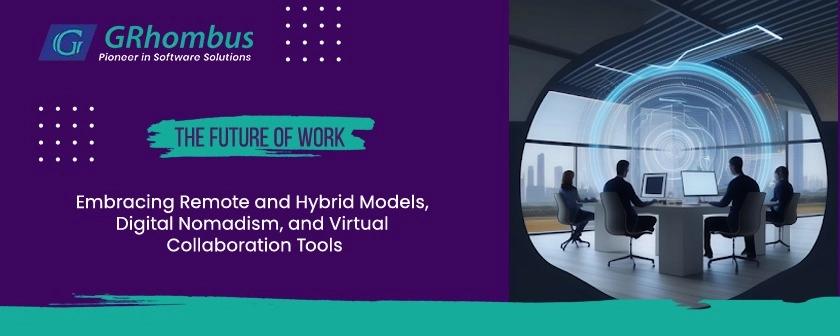The landscape of work is undergoing a significant transformation, driven by advancements in technology, changing employee expectations, and global events like the COVID-19 pandemic. This evolution has brought about new models of work, including remote and hybrid setups, the rise of digital nomadism, and the proliferation of virtual collaboration tools. Here’s a detailed look at these trends and their implications for the future of work.
Remote and Hybrid Work Models
Remote Work
Remote work, which allows employees to work from anywhere, has gained widespread acceptance. Key benefits include:
- Increased Flexibility: Employees can balance personal and professional responsibilities more effectively.
- Cost Savings: Both employers and employees save on commuting, office space, and related expenses.
- Access to Global Talent: Companies can hire the best talent regardless of geographical location.
Hybrid Work
The hybrid work model combines remote and on-site work, offering a balance between flexibility and in-person collaboration. Key advantages include:
- Enhanced Work-Life Balance: Employees can choose where to work based on their tasks and personal needs.
- Improved Collaboration: In-person meetings and interactions can enhance team cohesion and creativity.
- Reduced Office Costs: Companies can downsize office spaces, leading to cost savings.
Digital Nomadism
Digital nomadism is a lifestyle that allows individuals to travel and work remotely from different locations. This trend is driven by the desire for:
- Adventure and Exploration: Digital nomads seek new experiences and cultural immersion while maintaining their careers.
- Autonomy and Freedom: This lifestyle offers unparalleled freedom to choose one’s working environment.
- Global Networking: Nomads can build a diverse network of contacts worldwide.
Challenges of Digital Nomadism
While appealing, digital nomadism also presents challenges:
- Legal and Tax Implications: Navigating visa requirements, tax laws, and regulations in different countries can be complex.
- Loneliness and Isolation: Constant travel can lead to feelings of isolation and detachment from a stable community.
- Work-Life Balance: Balancing work with travel and exploration requires strong time management skills.
Virtual Collaboration Tools
The shift to remote and hybrid work has accelerated the development and adoption of virtual collaboration tools. These tools facilitate seamless communication and collaboration, regardless of location. Key tools include:
- Video Conferencing: Platforms like Zoom, Microsoft Teams, and Google Meet enable real-time video meetings and webinars.
- Project Management: Tools such as Trello, Asana, and Monday.com help teams manage tasks, deadlines, and workflows.
- Communication: Slack, Microsoft Teams, and WhatsApp facilitate instant messaging and group chats.
- Cloud Storage and Collaboration: Services like Google Drive, Dropbox, and OneDrive allow for secure file storage and real-time collaboration on documents.
Advantages of Virtual Collaboration Tools
These tools offer several benefits:
- Increased Productivity: Streamlined communication and project management enhance team efficiency.
- Flexibility: Teams can collaborate across different time zones and locations.
- Cost Savings: Reduced need for physical office space and travel.
Preparing for the Future
As these trends continue to shape the future of work, organizations and individuals must adapt:
- Embrace Technology: Invest in the right tools and infrastructure to support remote and hybrid work.
- Foster a Culture of Trust: Encourage accountability and trust among remote and hybrid teams.
- Support Employee Well-being: Provide resources and support for mental health and work-life balance.
- Stay Agile: Be ready to adapt to changing circumstances and new opportunities.
The future of work promises to be dynamic and flexible, offering opportunities for innovation, growth, and a better work-life balance. By embracing these trends, organizations can stay competitive and attract top talent, while individuals can enjoy greater freedom and fulfillment in their careers.
